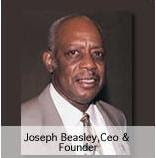We had to kill protesters'

Kisumu - The rioters were looting, setting fires, blocking roads with burning tires. Police chief Grace Kaindi says she had no choice. She ordered her officers to fire.
The toll, according to the hospital in this opposition stronghold 300km northwest of Nairobi: 187 people shot, 44 of them dead.
One policeman was hit by a rock thrown from the crowd.
Hospital records and Kaindi's account of the December 29 violence, in an exclusive interview with The Associated Press on Tuesday, countered previous police denials that they shot protesters.
Human rights workers accuse Kenyan police of unjustified killings in the violence that followed December 27 elections President Mwai Kibaki is accused of stealing. International and local observers say the vote count was deeply flawed.
'We had to kill them'
Kaindi said the violence in this Lake Victoria city escalated until she had no choice: "It was an extreme situation and there was no other way to control them. I gave the order to open fire myself when I heard that my officers were being overwhelmed. If we had not killed them, things would have got very bad."
The US-based rights group Human Rights Watch said in a weekend statement that police were behind dozens of killings and that they opened fire on both looters and opposition protesters under an unofficial "shoot to kill" policy. Police spokesperson Eric Kiraithe denied the Human Rights Watch accusations, saying officers have "acted strictly within the laws of this country".
Human rights workers say Kisumu, Kenya's third largest city, suffered the worst police brutality because it is the heartland of Odinga's stronghold.
Of the 612 deaths government officials have attributed to election violence, 53, or nearly 10%, have been in Kisumu, and 44 of those 53 were killed by police bullets.
Kaindi's acknowledgment came on Tuesday, a day before the start of a new round of protests called by opposition leader Raila Odinga, who has ignored pleas from church leaders and others to cancel the protests that have fuelled much of the violence. The unrest has included ethnic attacks against Kibaki's Kikuyu people.
'We're better prepared'
Kaindi promised no more bullets. "We're better prepared," she said.
But on Wednesday, Kisumu protester Dickson Oruk said he saw the body of one man, apparently shot in the head, laying on the ground near three other wounded men who had been shot in the chest.
Police let loose volleys of rifle fire into the air over rock-throwing protesters. About 1 000 rowdy young men marched through Kisumu carrying a coffin with Kibaki's name on it.
Kaindi said she had no regrets about the December 29 shootings, saying that all those shot were "looters and thieves".
But Robert Owino, a 21-year-old mechanic, said he was walking home from work when he was shot in the chest.
'I'm innocent'
"I'm very angry about what has happened because I am innocent," he said from his hospital bed. "So many people were shot and, like me, they were doing nothing wrong."
The hospital records show 44 of 53 bodies taken to its morgue in the aftermath of the riots had bullet wounds. Another 59 people were admitted with gunshot wounds and 84 people with bullet wounds and grazes were treated as outpatients.
Seven of the others killed were burned to death and the rest appeared beaten to death with "blunt objects," the records show.
Nurses at the run-down hospital said the ward beds soon filled and they had to treat patients in the corridors. Many of the wounded simply bled to death on the floor due to a lack of blood for transfusions, nurses said.
The Reverend Charles Oloo K'Ochiel, a Catholic priest who collated an independent tally of those shot from visits to the hospital and its morgue told the AP he counted 68 dead and 56 injured.
Bullet wounds
"When you go into a hospital ward and see that 95% of the patients are victims of bullet wounds, you have to wonder if the police were brought here to bring peace or to shoot every human being that comes their way," he said.
All those with bullet wounds were from Odinga's Luo tribe, he said. Victims burned and beaten to death were assumed to be Kikuyus.
One body in the hospital morgue had eight bullet wounds, according to Oloo K'Ochiel.
Oloo K'Ochiel said: "This is Raila's place. The police have been overzealous, fearing that people will react more violently to the election fraud than in other places."
The scars still mark the main streets leading into Kisumu. Shattered windows, abandoned roadblocks and the blackened, twisted remains of cars, shops and gas stations testify to the anger of the city's residents.
Brad Onyango does not deny participating in the violence.
Tension and anger
"There was a lot of tension and anger among the people here," the bus driver said. "We didn't want to hurt anyone, that wasn't our aim. We didn't have guns. Our aim was to show the world that we are angry and tired of this government and its corruption."
George Odhiambo, a student who said he was caught up in the chaos, accuses the police of acting out of "pure malice and they opened fire on anyone .... We were scared for our lives and ran for cover."
Onyango accused police of stealing, breaking through shop windows with their rifles. "Most of them were breaking into shops with their guns and looting. Other people followed and were shot at," he charged.
Oloo K'Ochiel, the priest, said he also saw police stealing from shops.
Chief Kaindi denied her officers were looting.
Owino, the mechanic, was glad to be in his hospital bed as protests resumed on Wednesday.
"I don't want to risk my life by protesting, even peacefully," he said. "I have no confidence in the police now and I would like to see an investigation into what happened."


0 comments:
Post a Comment